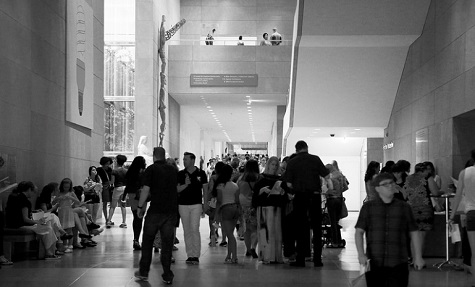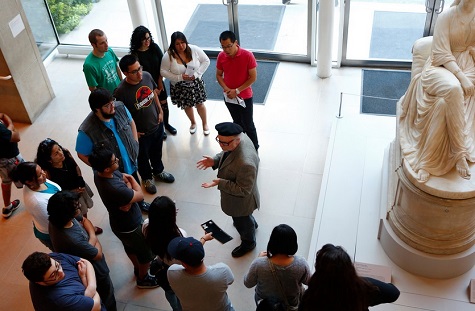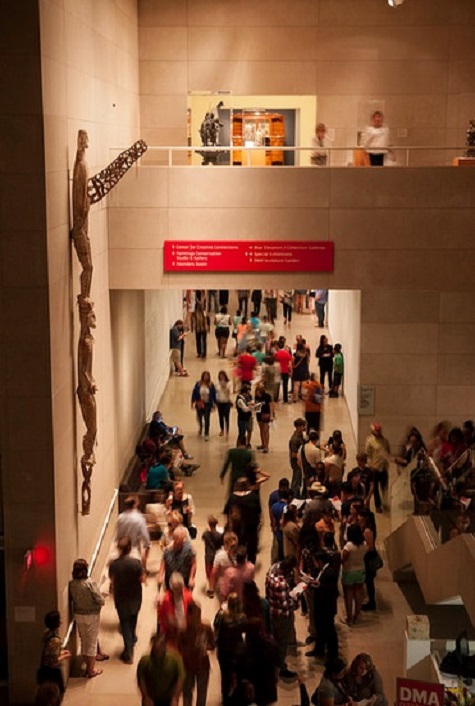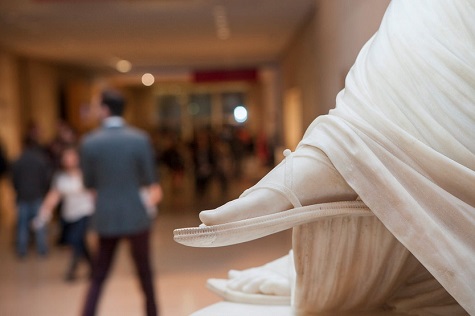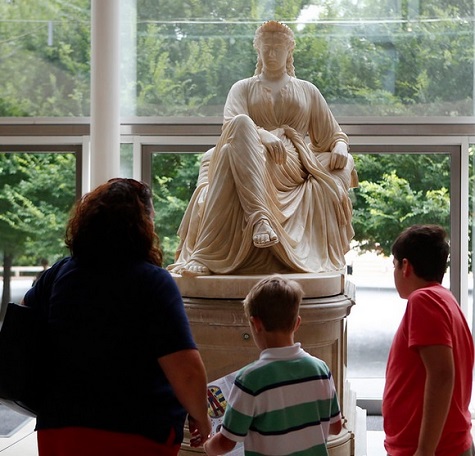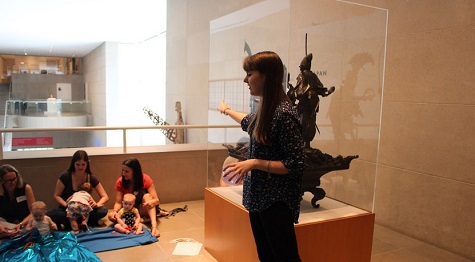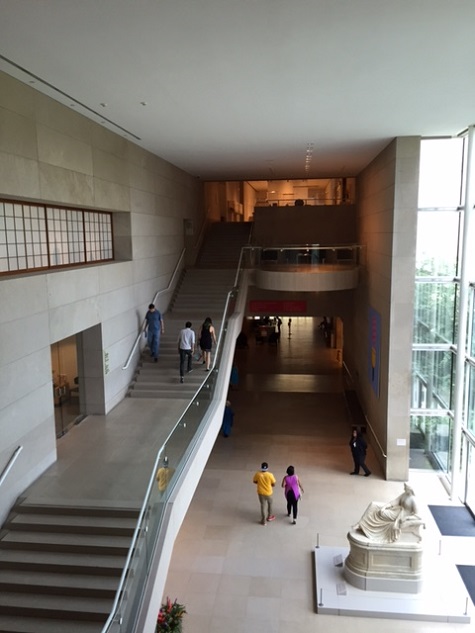The design of the DMA provides several places for visitors to observe disparate forms of art within adjacent spaces. I find these vantage points to be the Museum’s most unexpected assets and my recommended route passes three of them.
Take the mid-Concourse stairs to the third-floor balcony. From this elevated perspective you’re able to recognize the curious pairing of sculptures on the ground level and left wall. William Wetmore Story’s Semiramis follows the familiar tradition of depicting legendary figures in white marble. She reclines near the base of a 1930s Ceremonial pole (mbis) created by the Asmat people in the southwestern region of present-day New Guinea. These works arguably have little in common, and yet at the DMA they are neighbors, ripe for comparison and appreciation.
Next, proceed through the Japanese gallery on the Museum’s third level to the balcony that looks back onto your previous position. The expanse of artistic styles, periods, materials, and intentions gains a level of complexity with the presence of a cast bronze sculpture from the Meji period, Takenouchi no Sukune Meets the Dragon King of the Sea.
Emily Schiller is the Digital Collections Content Coordinator at the DMA.
